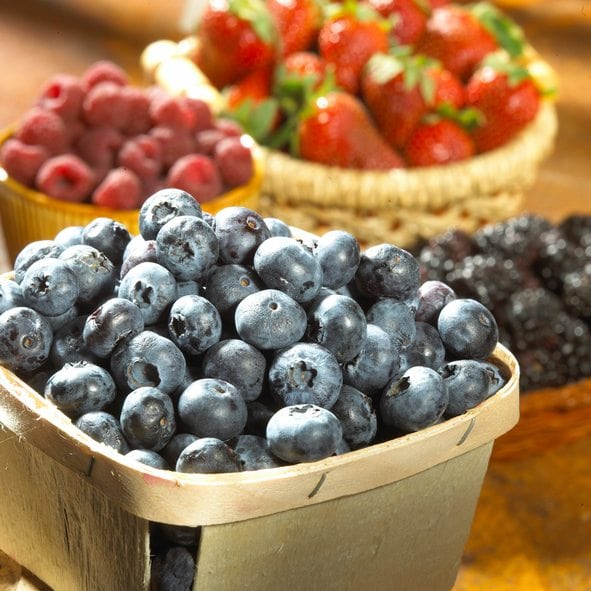Antioxidants, the nutrients in fruits and vegetables, help prevent damage to your body’s immune cells. They’ve been credited with offering protection from cancer and other diseases, preventing neuronal degeneration and even increasing your lifespan.
No wonder health professionals recommend diets rich in the antioxidant vitamins beta-carotene, vitamin C and vitamin E.
Simplify your search for antioxidant-rich produce at the local grocery store or farm stand by following your eye to specific colors: blue, orange, purple, red and yellow. Blueberries, for instance, contain more antioxidants per serving than any other fruit. One cup of wild blueberries provides an antioxidant value of 13,427 — as measured in ORAC (Oxygen Radical Absorbance Capacity) units — or about 10 times the United States Department of Agriculture’s recommendation. (Farmed blueberries provide 9,019 units per cup, still more than other fruits.)
Also look for other antioxidants like zinc (found in beans, oysters, nuts, whole grains, dairy and other foods) and selenium (poultry, beef, tuna brazil nuts).
 Here’s a list of antioxidant-rich foods. The antioxidant values of foods listed are measured in ORAC (Oxygen Radical Absorbance Capacity) units, developed by the National Institute on Aging at the National Institutes of Health.
Here’s a list of antioxidant-rich foods. The antioxidant values of foods listed are measured in ORAC (Oxygen Radical Absorbance Capacity) units, developed by the National Institute on Aging at the National Institutes of Health.
1. Small Red Bean (1/2 cup dried beans): 13727
2. Wild blueberry (1 cup): 13427
3. Red kidney bean (1/2 cup dried beans): 13259
4. Pinto bean (1/2 cup) : 11864
5. Blueberry (1 cup cultivated berries): 9019
6. Cranberry (1 cup whole berries): 8983
7. Artichoke hearts (1 cup cooked): 7904
8. Blackberry (1 cup): 7701
9. Prune (1/2 cup): 7291
10. Raspberry (1 cup): 6058
11. Strawberry (1 cup): 5938
12. Red Delicious apple (1): 5900
13. Granny Smith (1): 5381
14. Pecan (1 ounce): 5095
15. Sweet cherry (1 cup): 4873
16. Black plum (1): 4844
17. Russet potato (1 cooked): 4649
18. Black bean (1/2 cup dried beans): 4181
19. Plum (1): 4118
20. Gala apple (1): 3903

